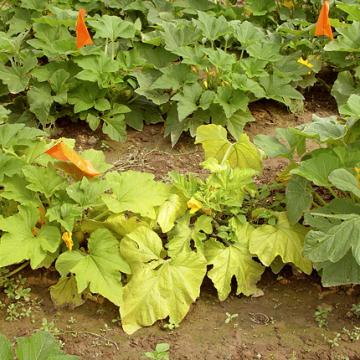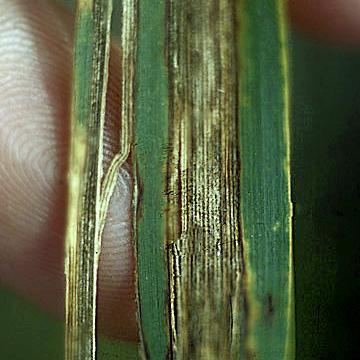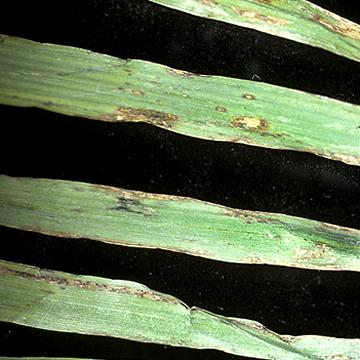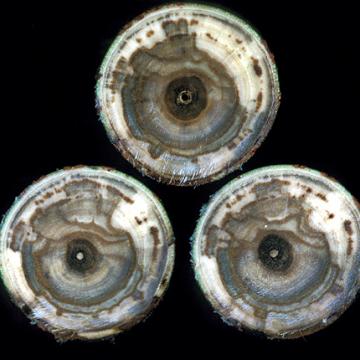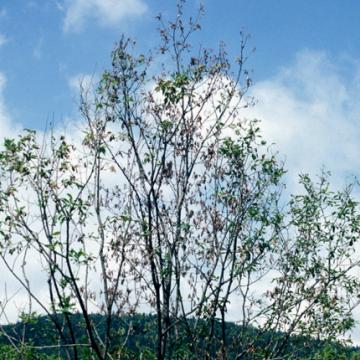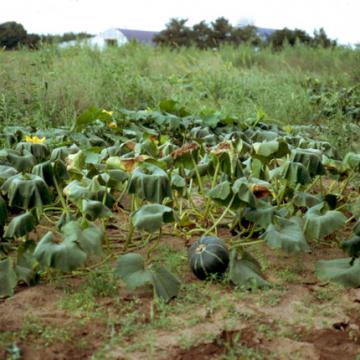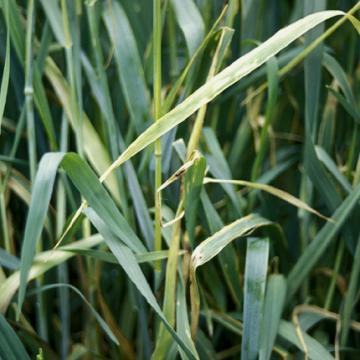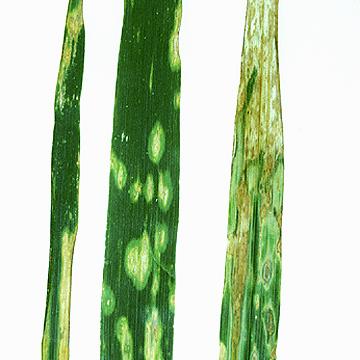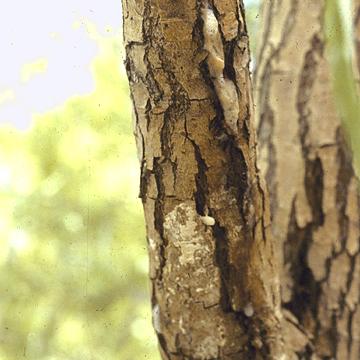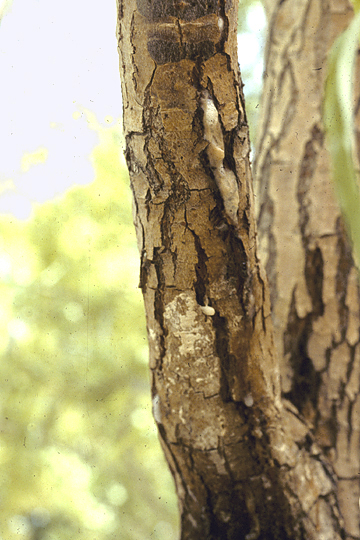DISEASE: Aster yellows
HOST: Squash
Diagnostic characteristics for the disease are yellowing of young leaves, proliferation of secondary shoots, and rigid erect habit. Leaves are misshapen and smaller than normal and have stiff, thick laminae.
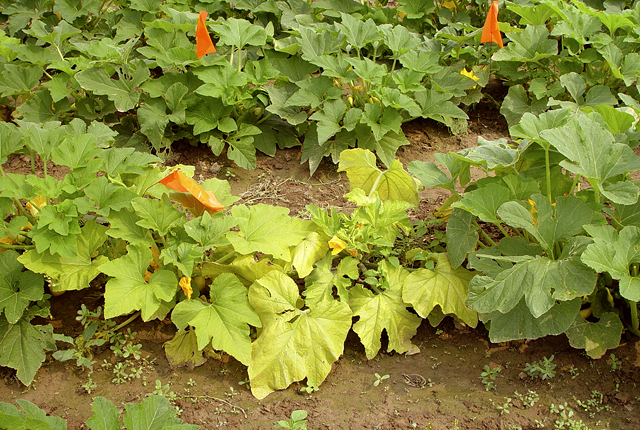
Aster yellows | Squash
DISEASE: Aster yellows
HOST: Squash (Cucurbita sp.)
PATHOGEN: 'Candidatus Phytoplasma asteris'
PATHOGEN SYNONYM: Phytoplasma Aster yellows group
SOURCE: S. Miller
DISEASE: Bacterial leaf streak
HOST: Oat
Leaf with long, dark red streaks.
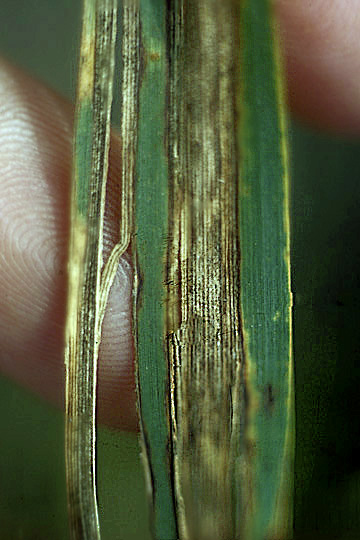
Bacterial leaf streak | Oat
DISEASE: Bacterial leaf streak
HOST: Oat (Avena sativa)
PATHOGEN: Xanthomonas translucens pv. cerealis
SOURCE: L. Claflin
DISEASE: Bacterial stripe (Blight)
HOST: Oat
Leaves with irregular necrotic spots and elongated stripes that are light tan in the center. Symptoms begin as water-soaked lesions.
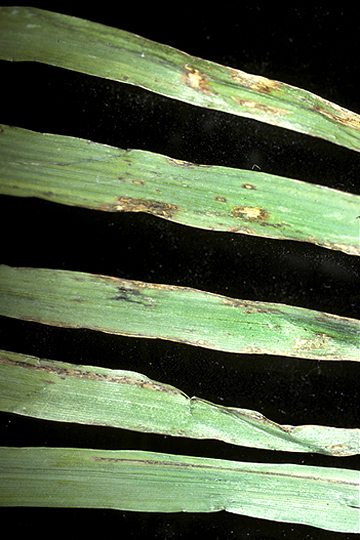
Bacterial stripe (Blight) | Oat
DISEASE: Bacterial stripe (Blight)
HOST: Oat (Avena sativa)
PATHOGEN: Pseudomonas syringae pv. striafaciens
SOURCE: S. Thomson
DISEASE: Bacterial wilt and dieback
HOST: Willow
Cross sections of the characteristic "watermark stain" of diseased wood. Wilt and dieback occur as disease progresses.
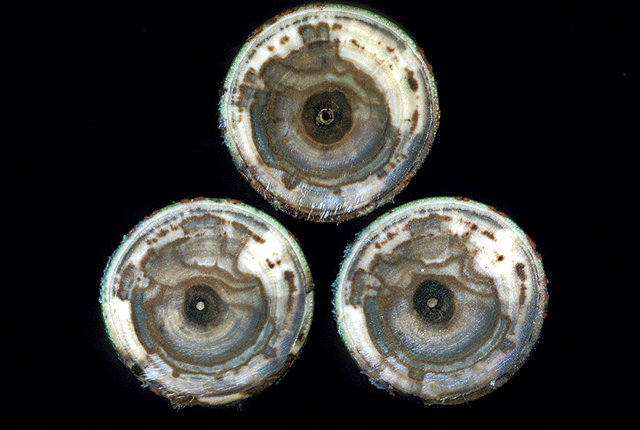
Bacterial wilt and dieback | Willow
DISEASE: Bacterial wilt and dieback
HOST: Willow (Salix sp.)
PATHOGEN: Brenneria salicis
PATHOGEN SYNONYM: Erwinia salicis
SOURCE: Y. Sakamoto, M. Goto
DISEASE: Bacterial wilt and dieback
HOST: Willow
Severely diseased tree with dieback symptoms.
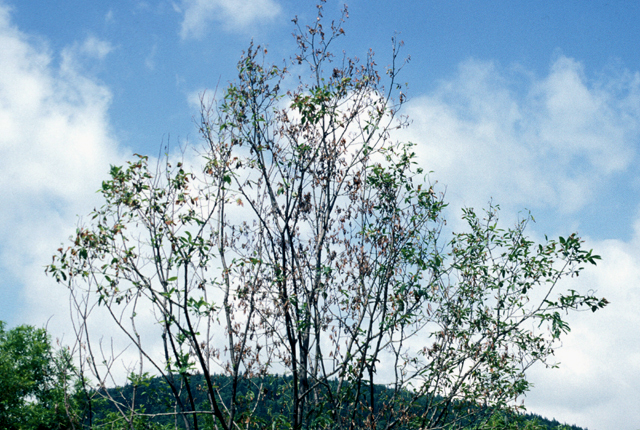
Bacterial wilt and dieback | Willow
DISEASE: Bacterial wilt and dieback
HOST: Willow (Salix sp.)
PATHOGEN: Brenneria salicis
PATHOGEN SYNONYM: Erwinia salicis
SOURCE: Y. Sakamoto, M. Goto
DISEASE: Bacterial wilt
HOST: Squash
Field with severe symptoms of wilt. Foliage often is chlorotic and leaf margins may be chlorotic and necrotic before plant death. Bacterial ooze may be seen streaming from the xylem when infected stems are cut.
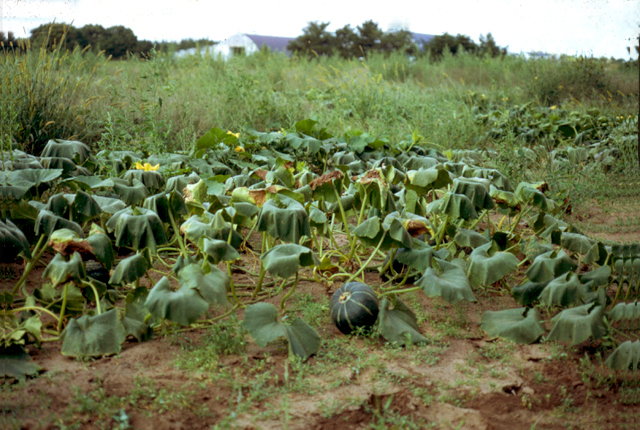
Bacterial wilt | Squash
DISEASE: Bacterial wilt
HOST: Squash (Cucurbita maxima)
PATHOGEN: Erwinia tracheiphila
SOURCE: B. Jacobsen, M. Shurtleff
DISEASE: Halo blight
HOST: Oat
Oat leaves with oval lesions that darken in time and have distinctive yellow halos.
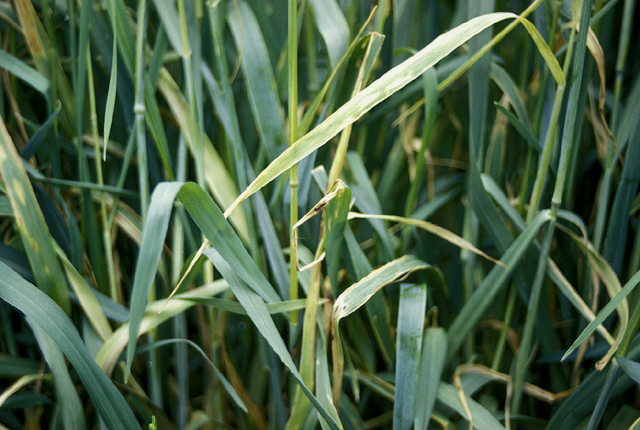
Halo blight | Oat
DISEASE: Halo blight
HOST: Oat (Avena sativa)
PATHOGEN: Pseudomonas syringae pv. coronafaciens
SOURCE: N. Schaad
DISEASE: Halo blight
HOST: Oat
Close-up of young and old lesions surrounded by halos.
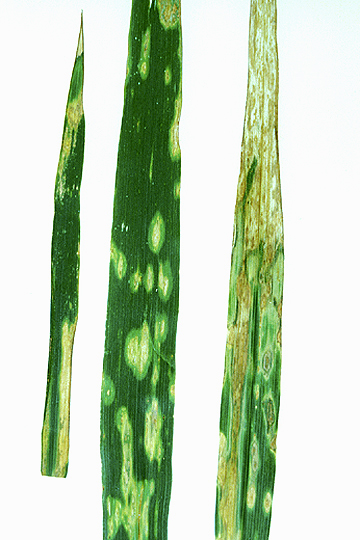
Halo blight | Oat
DISEASE: Halo blight
HOST: Oat (Avena sativa)
PATHOGEN: Pseudomonas syringae pv. coronafaciens
SOURCE: N. Schaad


